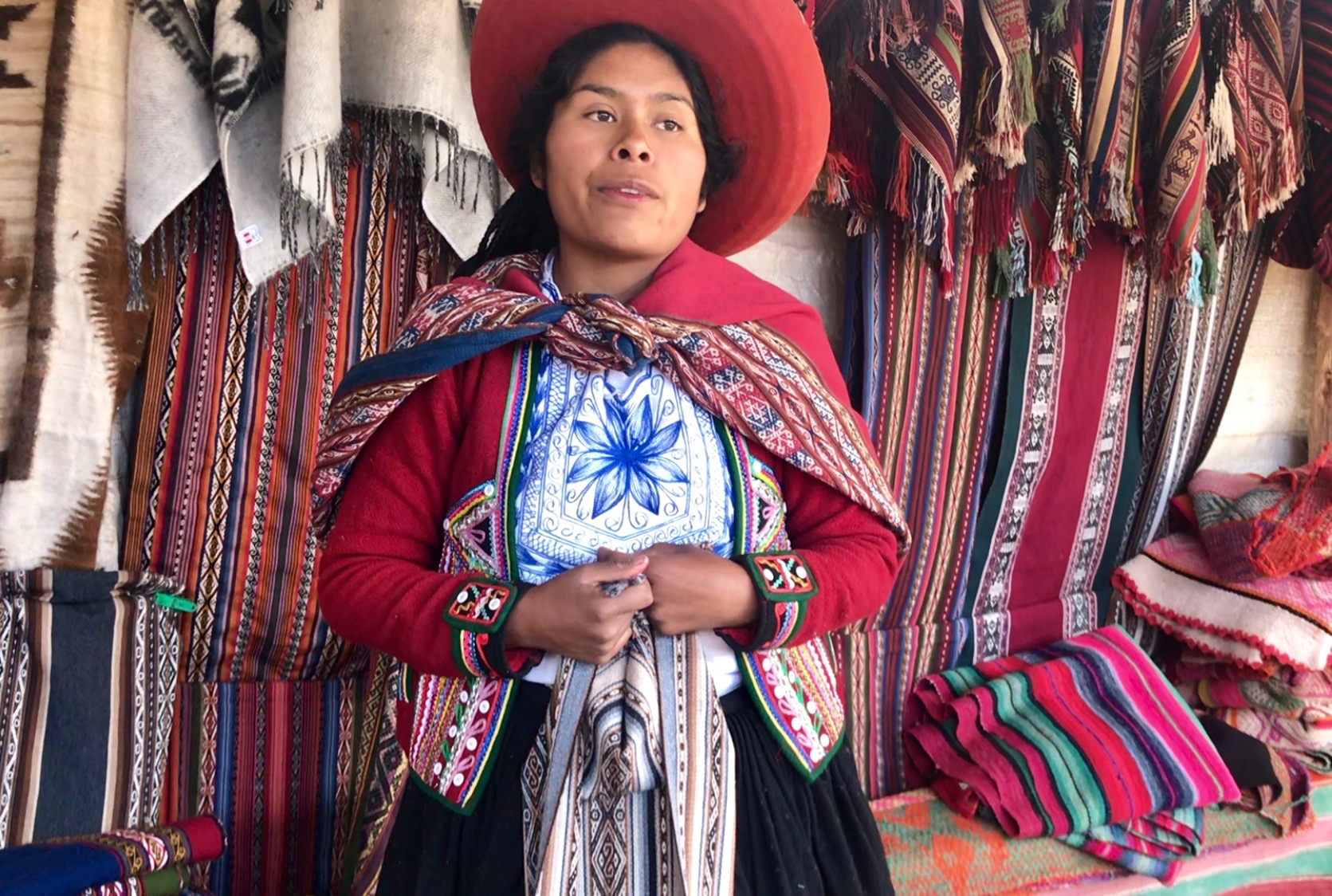Meet Lyda Guadalupe Callañaupa from Peru
| —
In August 2018 I travelled to Peru where I was lucky enough to meet Guadalupe, a single Mother raising her young son in the village of Chinchero When I arrived I specifically requested my tour guide, Geibel, take me to see authentic local textile weavers. We travelled to Chinchero in Cusco. It was there that I met 28 year old Guadalupe who had been weaving traditional cloth from the age of thirteen. Her family has been weaving cloth for over 100 years and financial strains had caused her to drop out of school to help in their cottage industry. She works extremely hard along with the other women in the village to make beautiful textiles from 100% natural fibres. In the video, Gualalupe demonstrates the process which starts from the raw alpaca wool being washed in natural soap and dyes ready for weaving. One piece can take between two to four weeks. The quality is amazing and in todays throw-away society these handcrafted fabrics are to be treasured. We quickly became friends despite her little English but Google translate helps and I intern started learning Spanish. She is very polite, and humble, with a beautiful heart and I consider myself honoured to have met her. |
Meet Intinan Sukjai from North Thailand
| —
Intinan’s heritage is the Thai Native Karen tribe, originating from North Thailand and she is the mother of her 12 year old daughter, Chor-Earn. Intinan has been practicing this traditional form of weaving from the age of 8, with her grandmother as her teacher. At 105 years of age her grandmother enjoys life and is fit and healthy, (her granddad passed away at the age of 109). When I asked Intinan about what her grandmother’s secret is in living a healthy life, she told me that her family only consume home grown (organic) vegetables and home farm chicken and eggs, along with wild forest mushrooms. Apparently Intinan is one of few people who still continue the Karen weaving which is very time consuming and can take 2 weeks to finish each piece. Today, few people practice Karen weaving as the people of the village do not consider it to be worth it as well as a lack of demand. I was sad to hear this and since then I have become passionate in helping this kind and humble person in preserving this beautiful and traditional form of weaving both now and into future generations. |
–
Meet Abdellah Al Boutti from Marrakesh
—
One of the main items of Peruvian male attire is a poncho. It is a warm outer garment, a large piece of fabric with an opening in the center for the head. Their many types of poncho according to its purpose, country where it is used (not only Peruvians wear ponchos) and so on. A lot of men wear a poncho in everyday life, but most people use it basically for festivals, weddings, and other events. Poncho style and color vary from region to region, just like women’s hats in Peru. You can tell what village is the man from his poncho. Usually, ponchos are red, but patterns can be radically different. Another typical part of men’s attire in Peru is hats. Men often wear sombreros. Peruvians make special hatbands for sombrero called “Cantillo”. They make sombrero look more festive and colorful. But the most popular hat is chullo. It is a handmade item, knitted, with ear flaps and tassels. It is made from alpaca, llama, vicugna or sheep’s wool. This hat is traditional for Peruvian men. Fathers often make chullos for their sons. Also, men wear simple trousers (today they often use western-style trousers which can be easily bought at the market) and sweaters made from alpaca, llama or sheep’s wool. Sweaters are warm, with different geometrical and animal ornaments.









